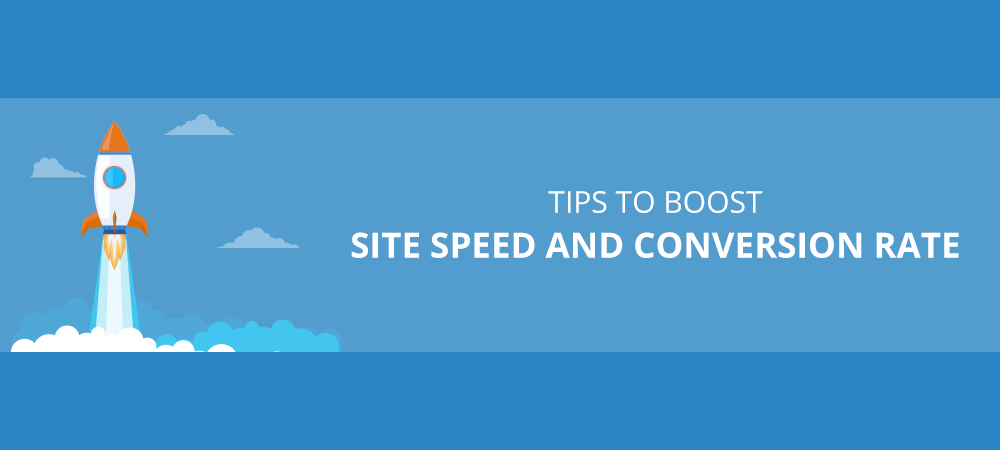Website speed is a key determinant in the conversion process counts as the cornerstones of your digital presence. In today’s era, online shoppers demand a fast and streamlined user experience. Here your website not only decides if a prospect will convert or not but also plays as a ranking factor on Google SERPs. Google prefers websites that are speed optimized and can load pages within the 2-second benchmark. According to Google, a mere difference of 4/10ths of a second in search results can reduce the number of searches by 8,000,000 per day. In this article, we will share 6 simple tips on how to boost your website speed to win your conversions and earn the good graces of Google at the same time.
Here are some benefits of a faster website
- Simply put, a faster website allows customers to browse stores and make purchase decisions confidently without the fear of landing on a fake store.
- A speed optimized website will be capable of quickly delivering the changing contents such as product information, pricing, and stock levels, etc.
- A speedy website prevents cart abandonment by quickly loading the checkout page before the customer disorients and leaves the cart.
- Websites that use promotional and advertising content to earn income on the side need a high fast performing storefront to accommodate media content
- Higher speed means easier and efficient store management, especially when vendors and retailers are connected with online offices, warehouses, and other supplier channels
- Speed also works as a storage and testing tool for analytics and business strategies. This information helps online merchants understand their status quo to improve their businesses
Implement Minimalism
Poor website design is one of the leading causes of slow speed. Flooding the website with unnecessary elements not only chokes the loading speed but also takes a toll on the user experience. Use minimalism and simple design to reduce the number of HTTP requests when downloading content such as video, graphics, and JavaScript files from your website. This also includes optimizing your website’s media elements to their most effective size and format so the speed remains unhindered.
Use Tools for Testing
The first thing to consider is website speed testing tools. Tools such as Pingdom and Page Speed Insights are one of the top-rated tools that allow webmasters to analyze their website performance and identify the specific elements that are slowing the website down. These tools are free and take minimum time to fetch results with razor precision. Once you have the slow causing components in front of you, you can assign a speed optimization developer to work on it and fix the issues.
Code Clean-Up
Your code has to be spic and span to meet an ideal speed benchmark for your website. Sadly, many webmasters neglect this key factor and overly stress on other causes which often results in poor website performance and bad loading speeds. Many extra lines remain locked in your code but serve no important function for the website. Combines all together, these junk lines and clog the flow of other important functions and weigh down your website speed by adding extra work for the browsers. Make sure to audit your code and fix areas that are slowing the website.
Content Delivery Network (CDN)
Here you are using your content on different geographical regions where the delivery speed is independent of the proximity of the specific region back to your web server. CDN hosting works through data centers deployed on multiple regions which ensures that the contents are smoothly delivered to the end-user from the closest located server. In simpler terms, a CDN significantly improves the user experience by taking advantage of an efficient network of resources. Websites that have loads of media content must use CDN hosting to effectively deliver their content to end-users. This helps save cost on additional hardware and hiring resources to manage it.
Mobile Responsive
Mobile commerce is gradually taking over desktop devices and now commands an overwhelming percentage in global sales. It’s a growing sales channel that no online merchant can afford to ignore. But without a perfectly responsive, speed optimized, and scalable website, you cannot tap your mobile customers. Make sure your website is mobile optimized with properly positioned CTAs to drive conversions. An unresponsive website not only suffers from poor loading speeds but also damages its brand reputation.
Use Speed Optimization Services
According to research, 47% of customers abandon a website if it fails to load within 2 seconds. Using speed optimization services, you get a professional audit for your website where the store owner does not put any effort and the service provider undertakes all the procedures. This helps improve the load time, reduces the server load, and overall performance by compressing images, extensions and theme, enabling flat catalog and code validation. Whether you have a store on Prestashop, WooCommerce, or Need speed optimization for Magento 2, it is a fast and secure method speed up Magento 2 store and getting results in a shorter time frame.







Recent Comments